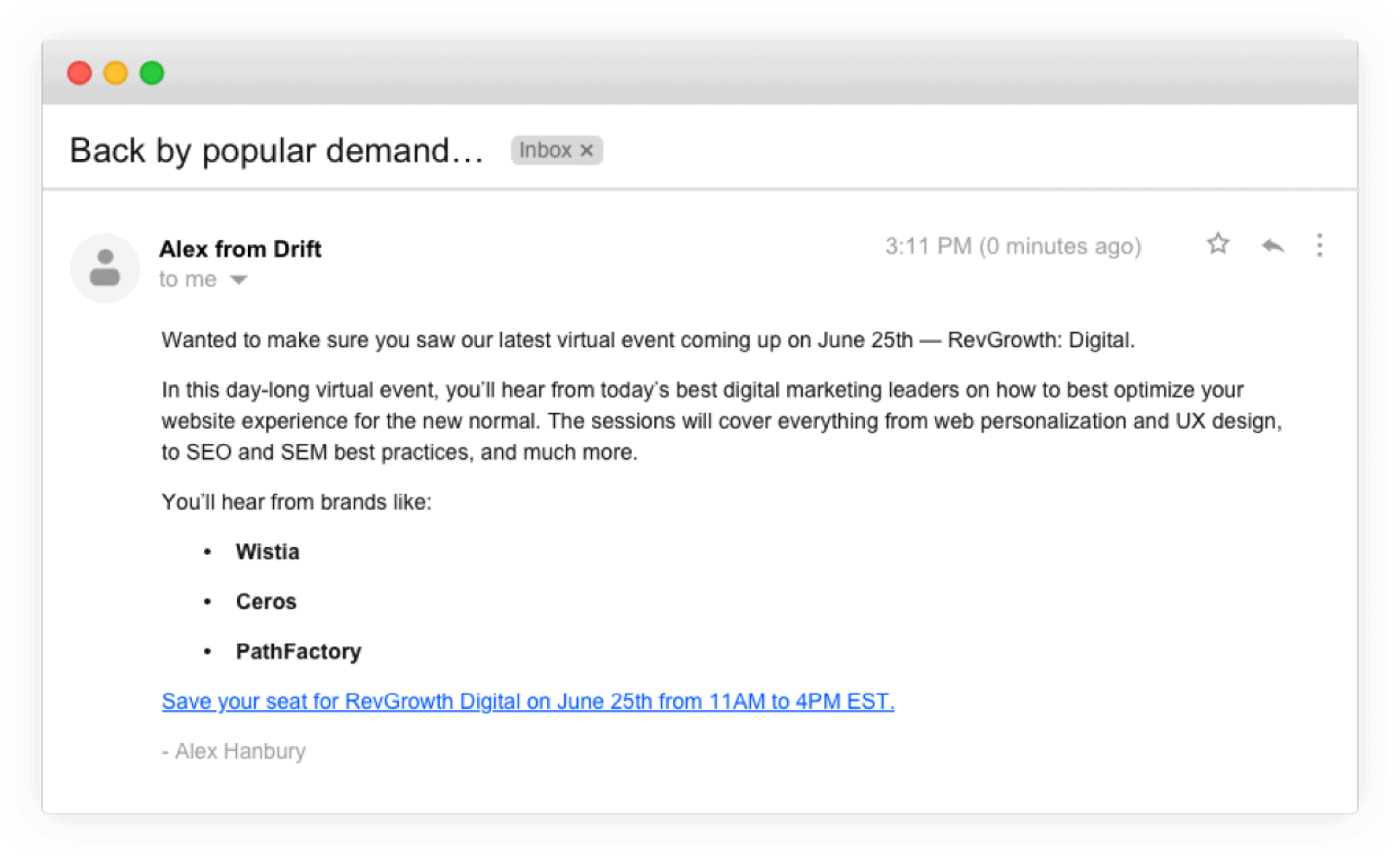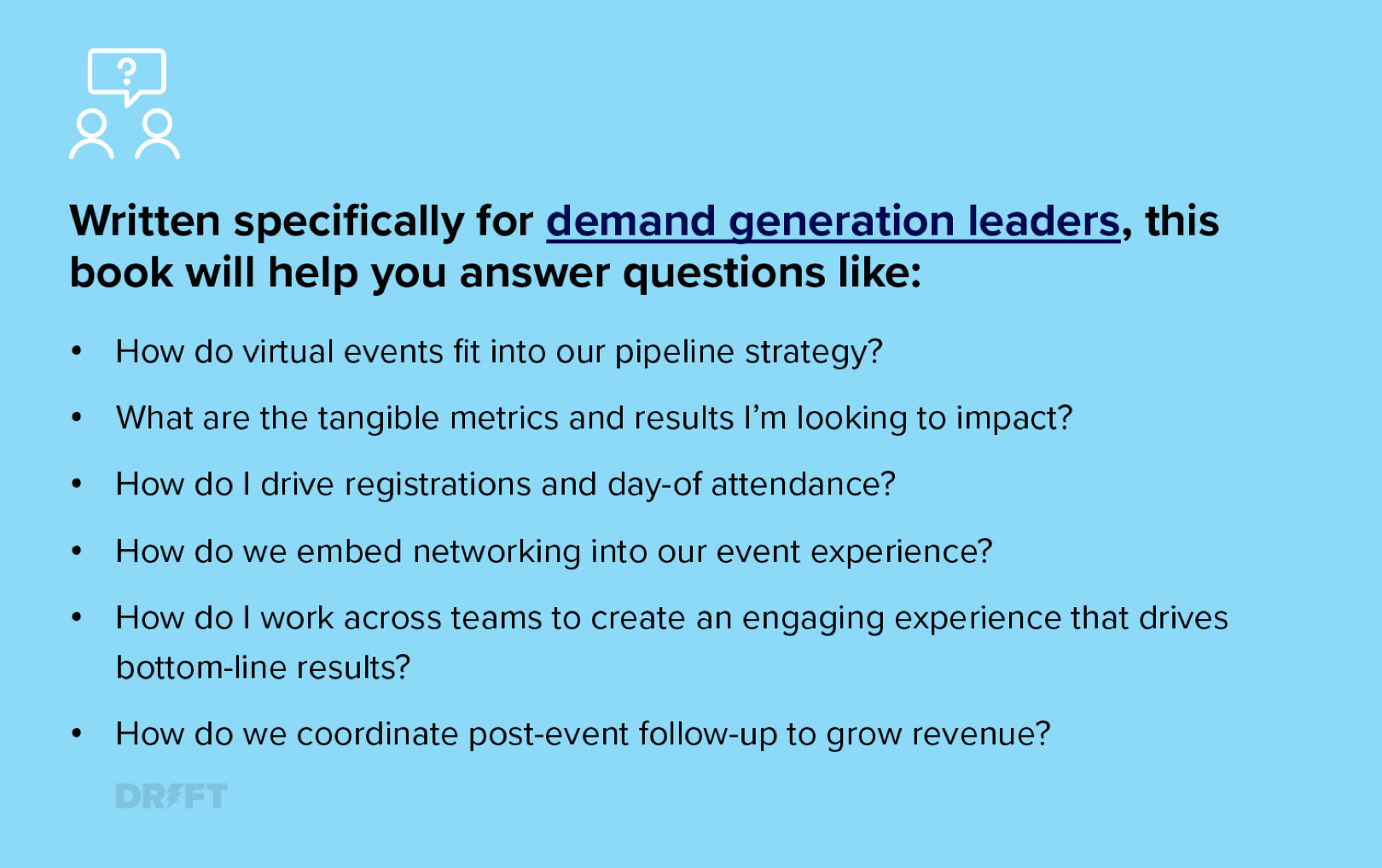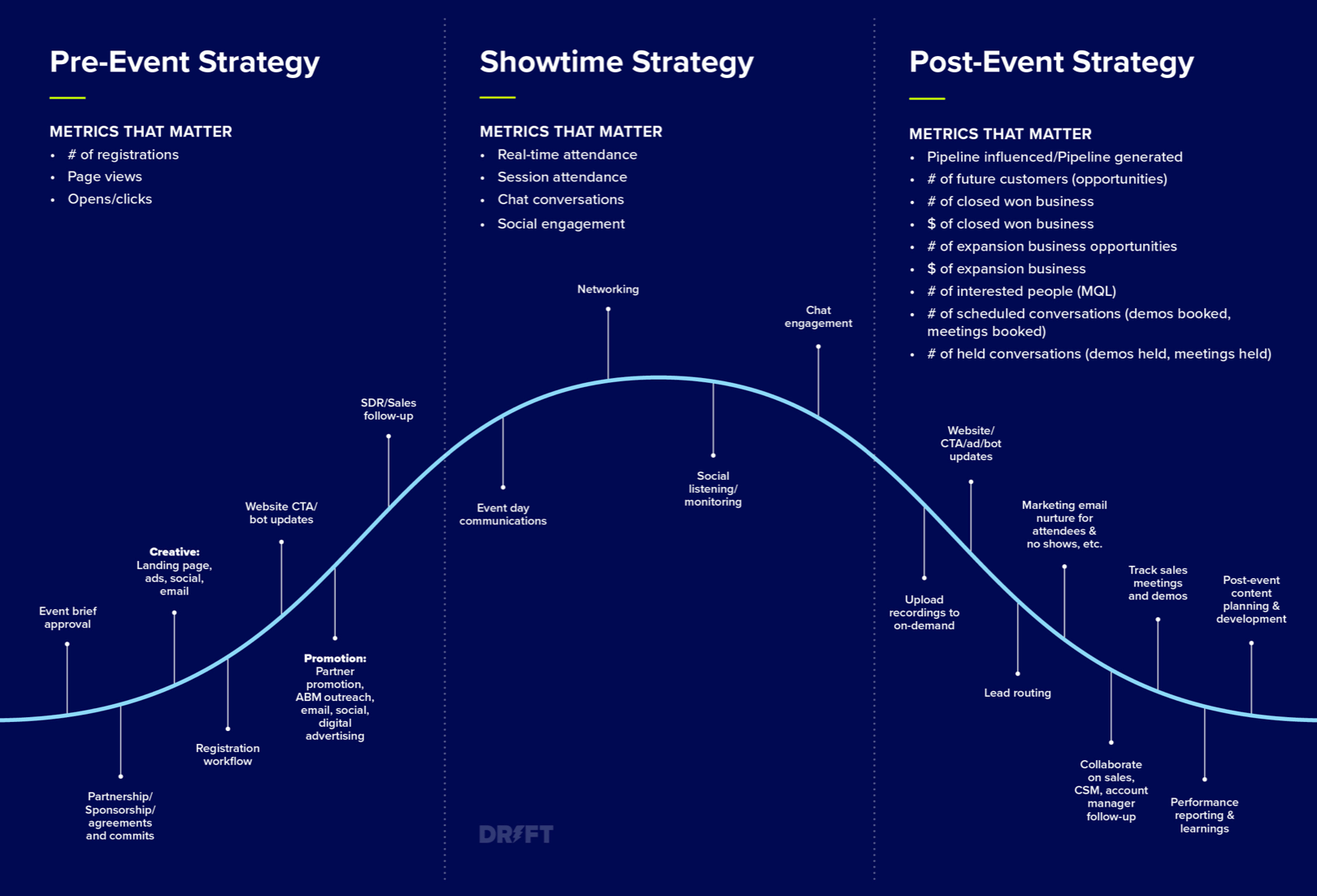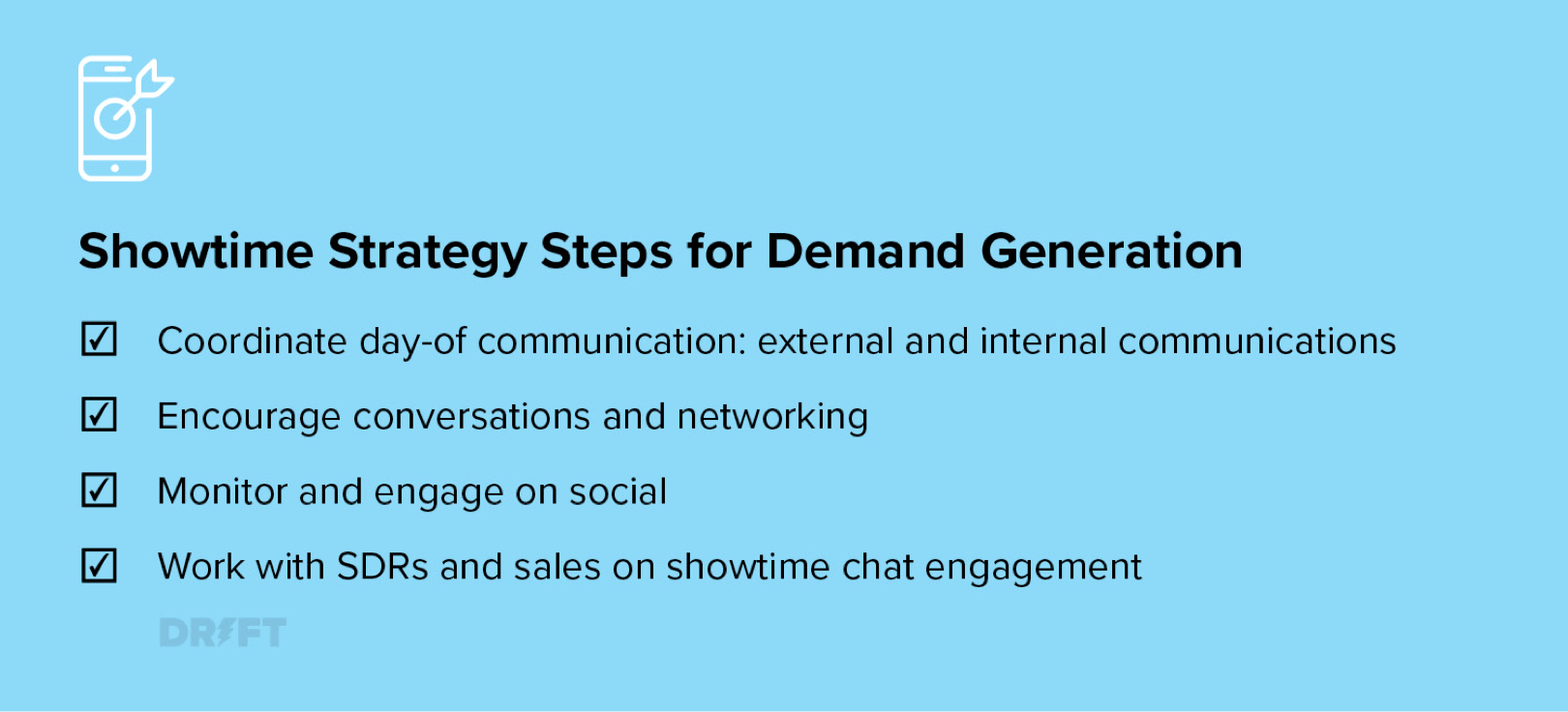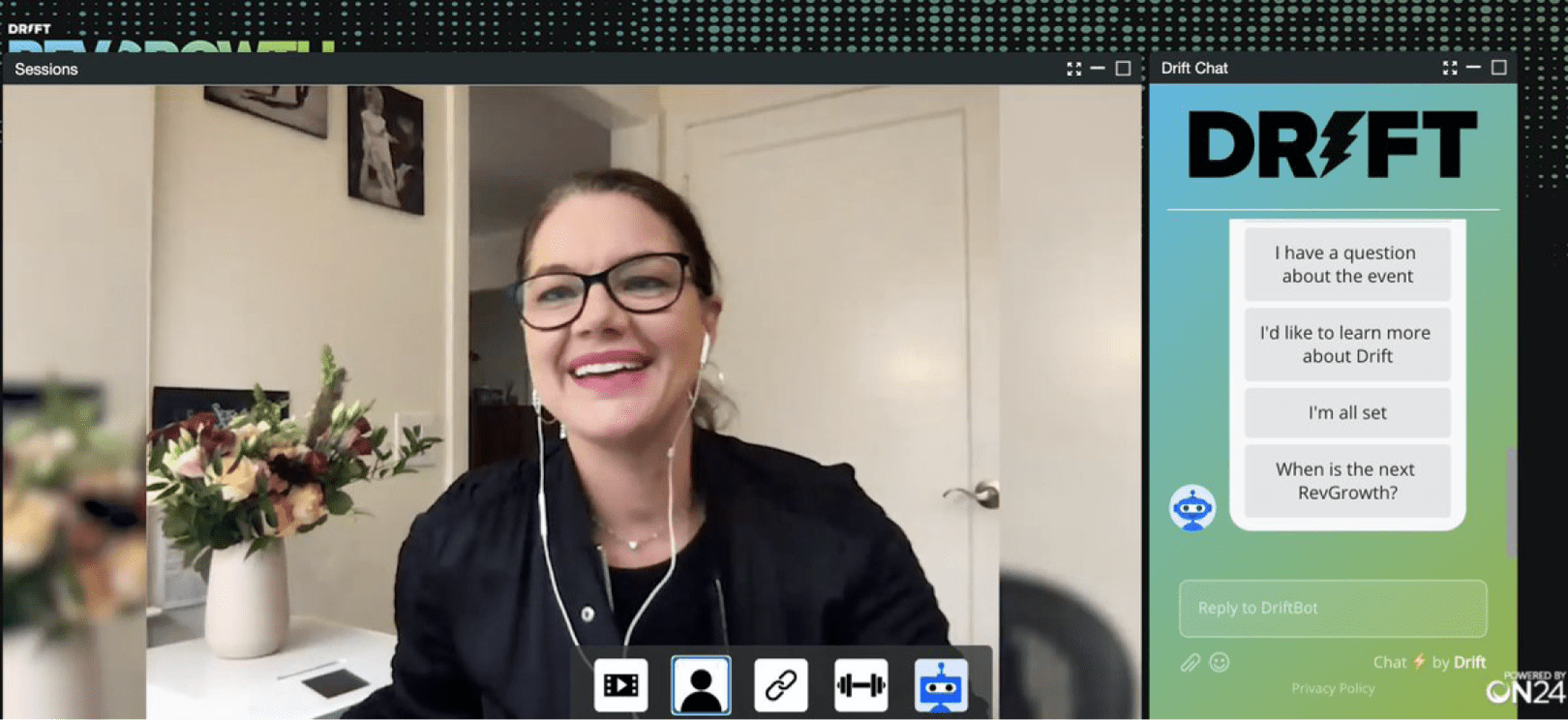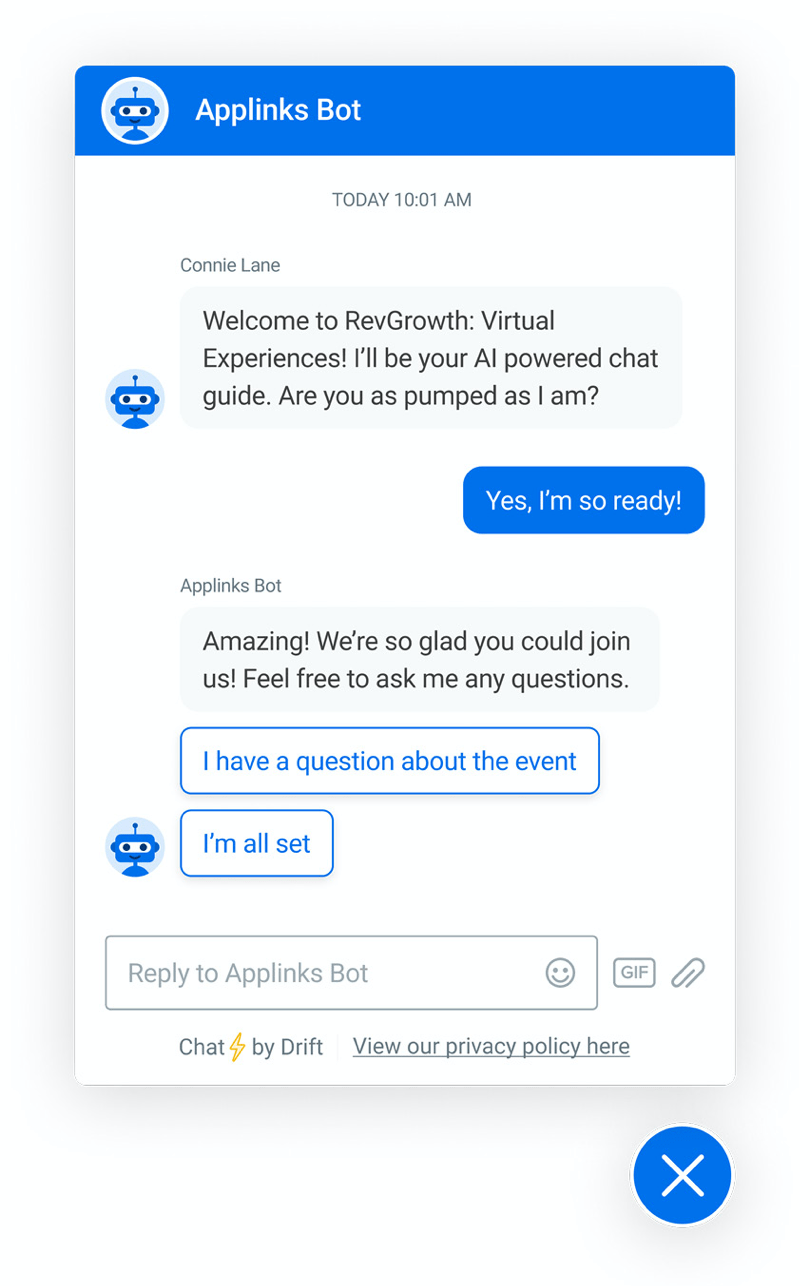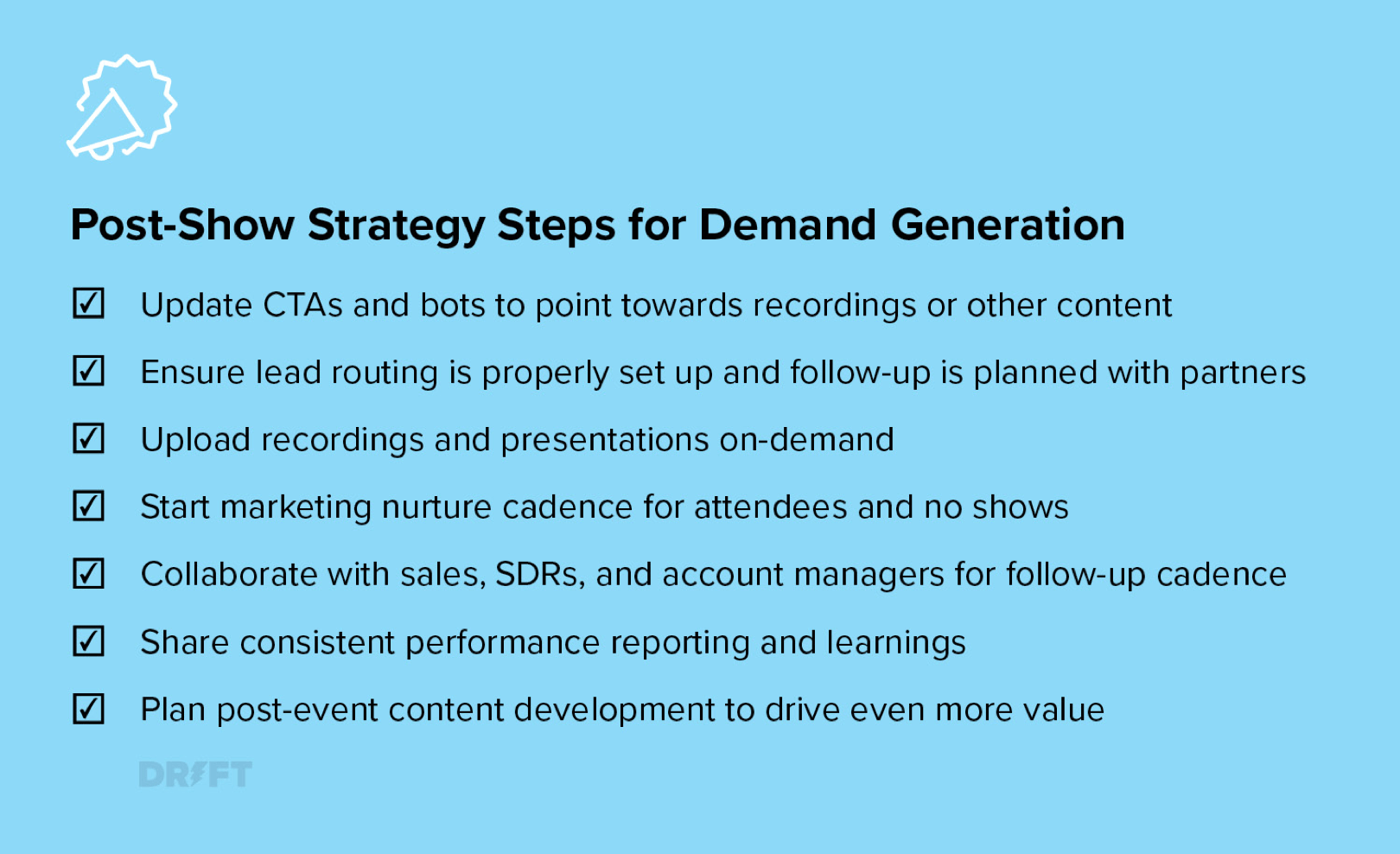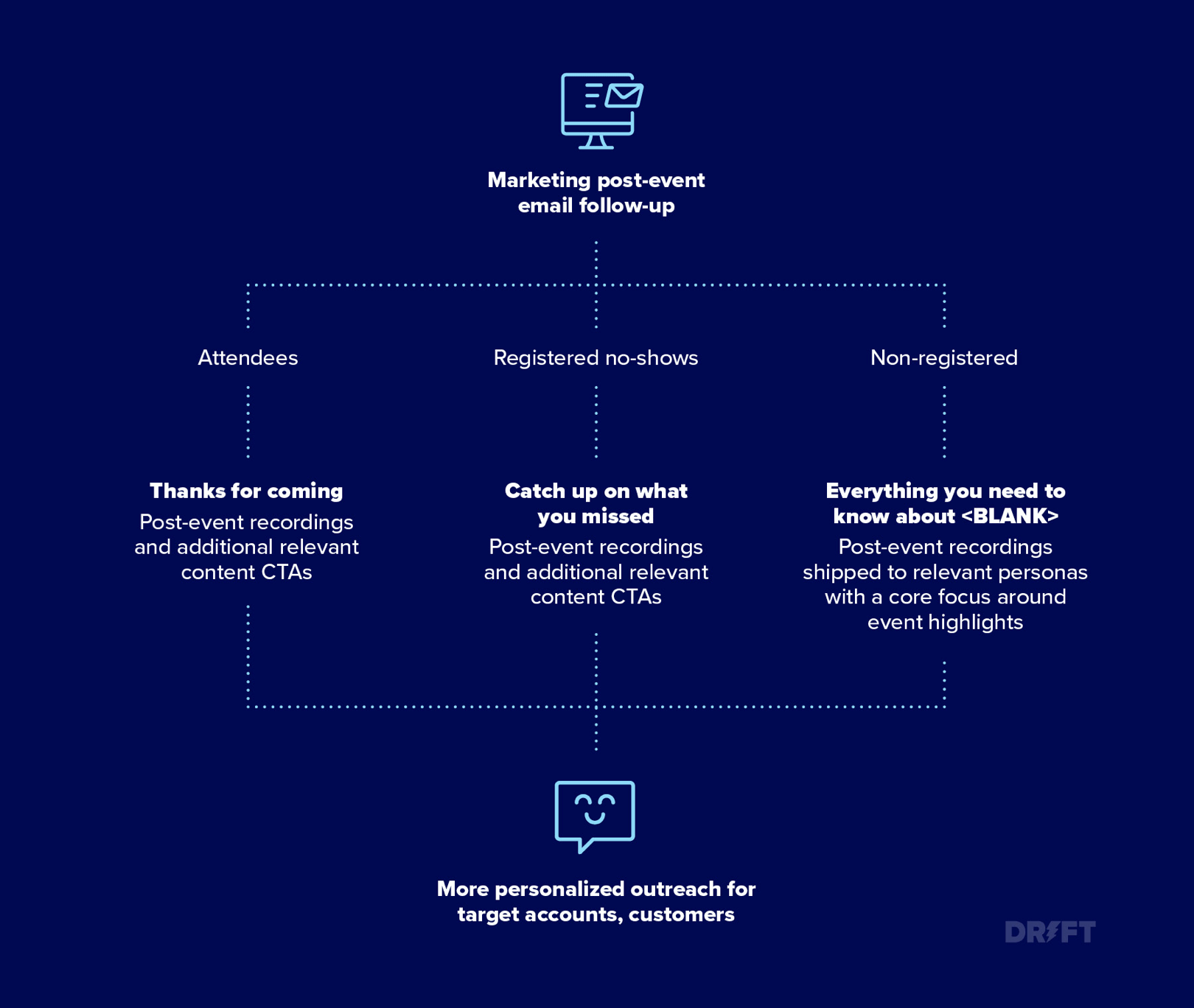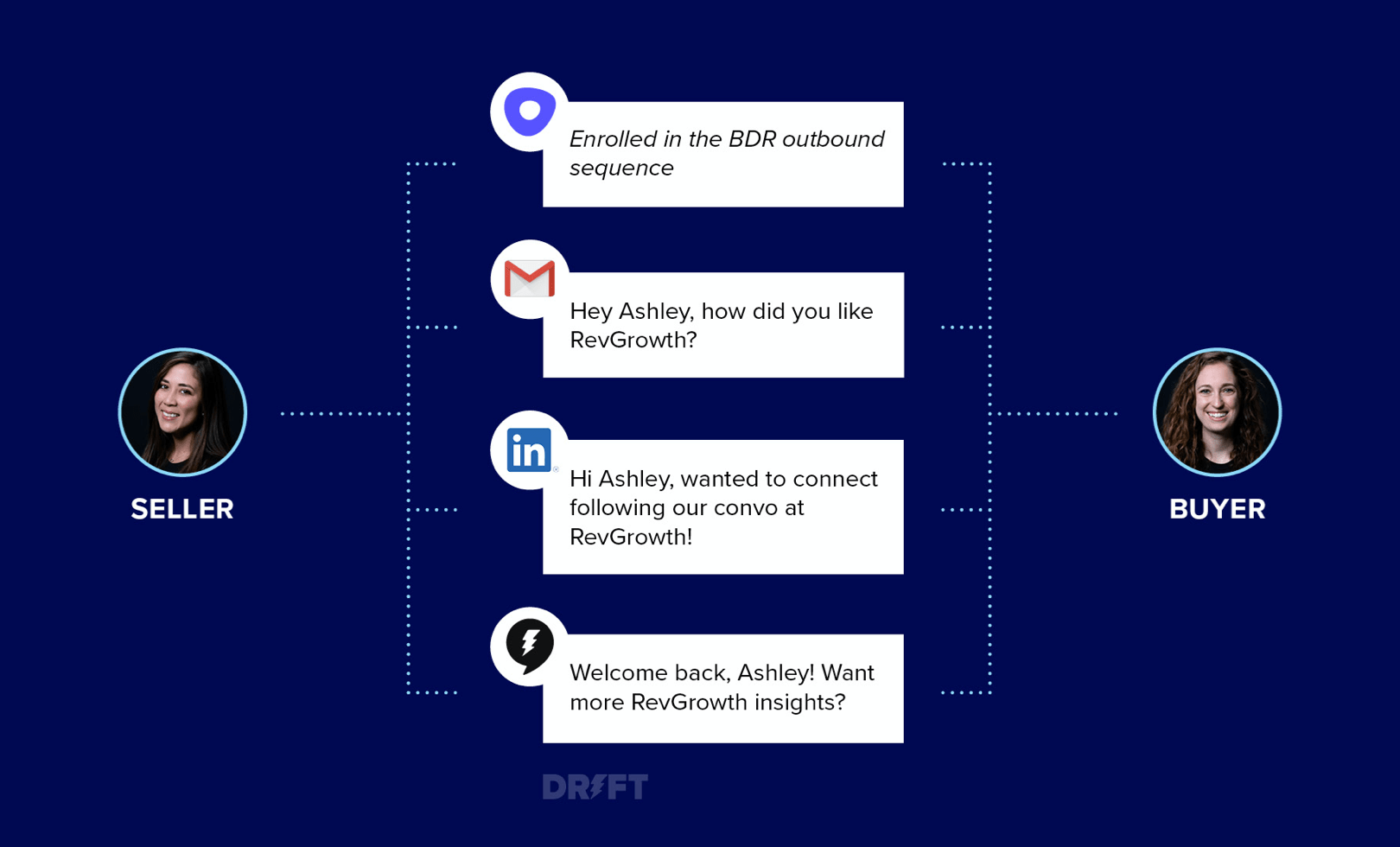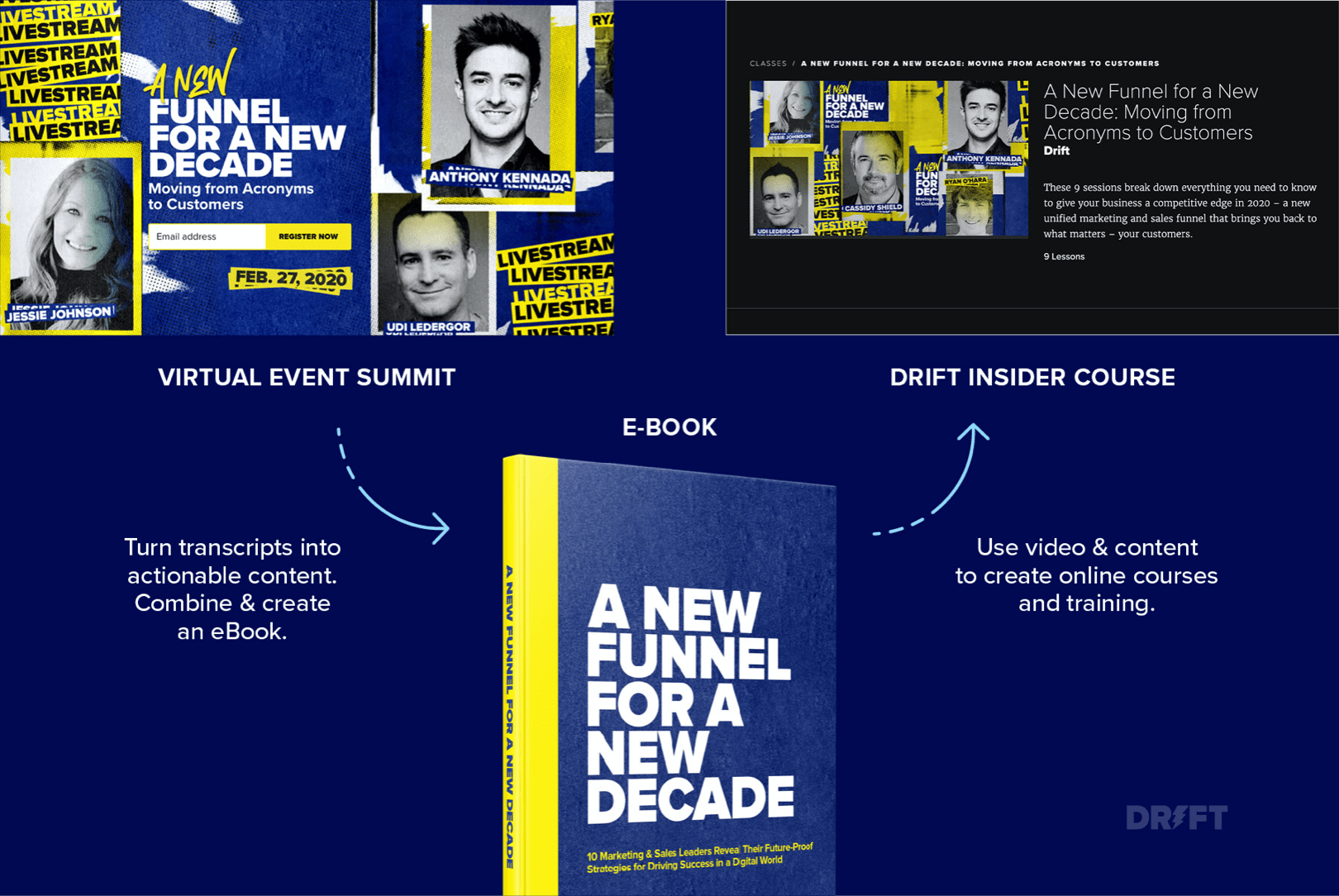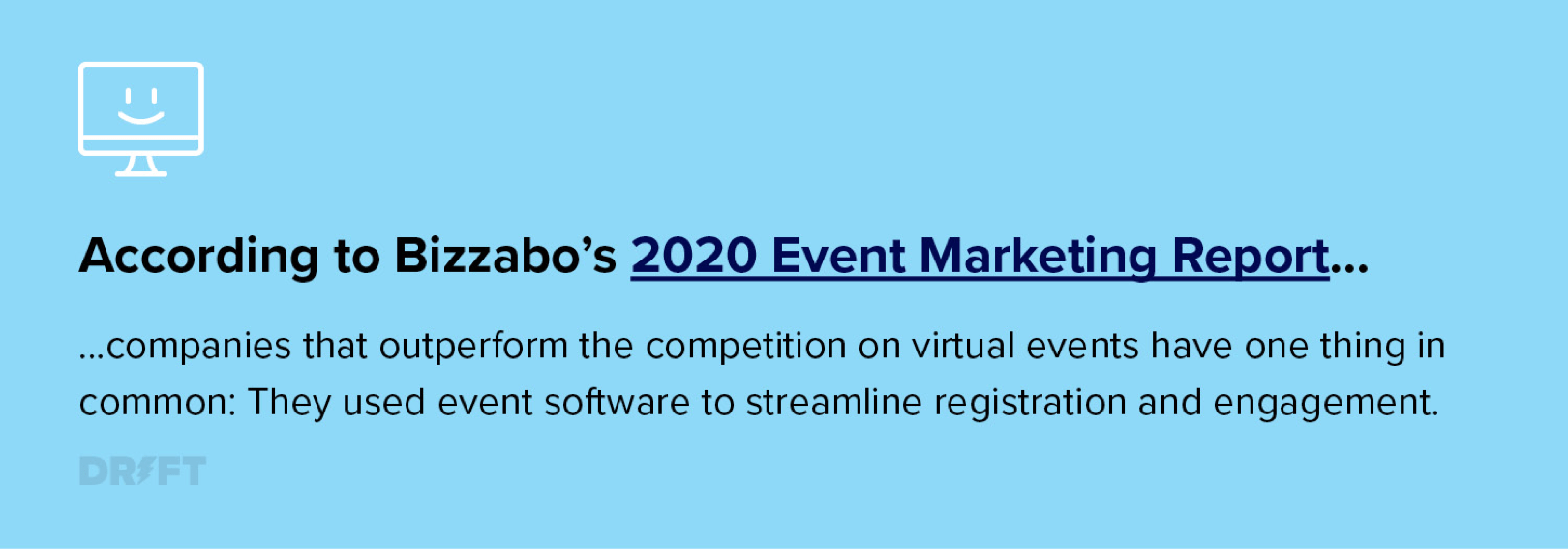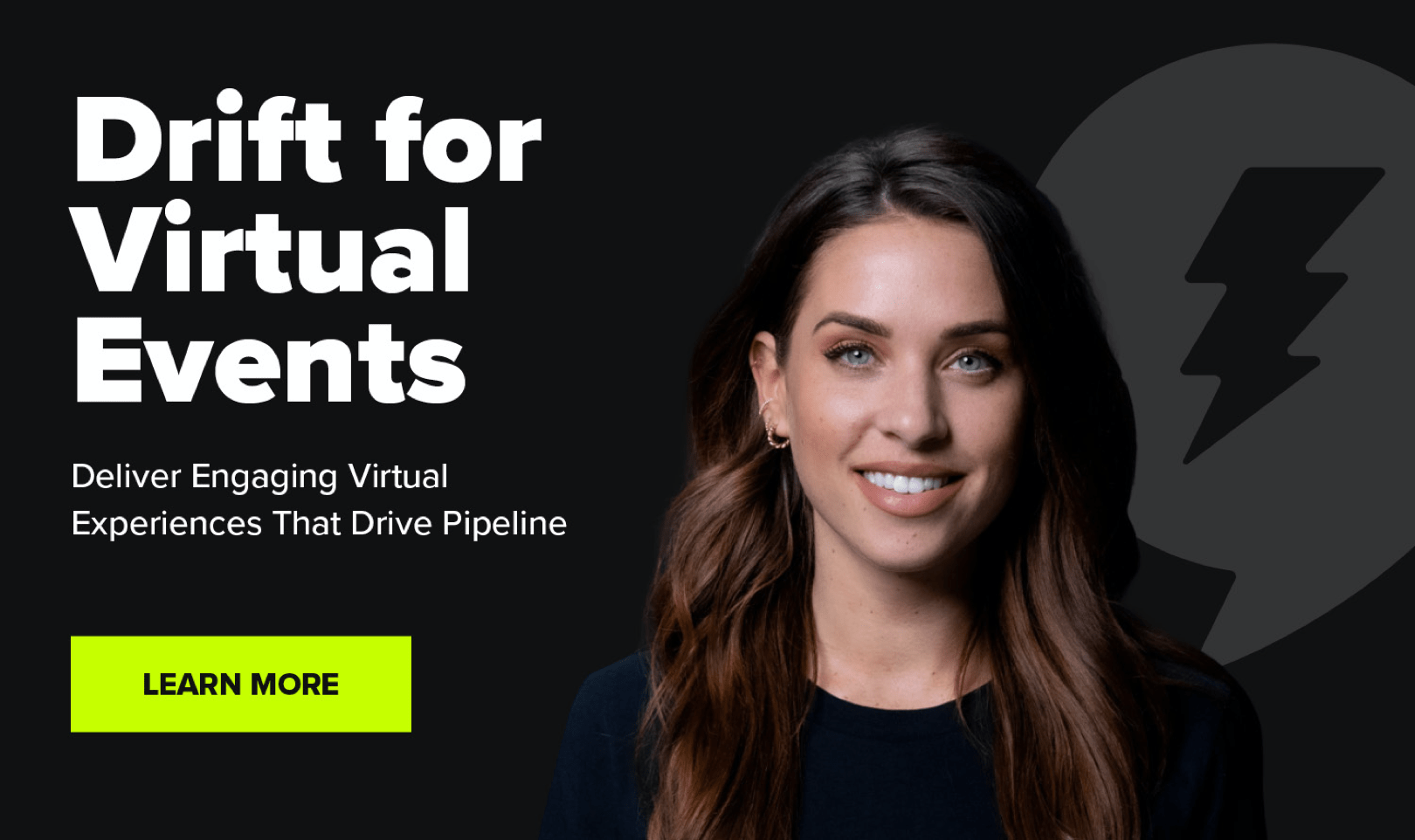Streamlining the Registration Process
63% of marketers agree: Event registration software has the greatest contribution to event success. The reason is simple: Driving registrations for virtual events is challenging. In a report from PathFactory and Heinz Marketing, only 27% of marketers said their company was effective at generating registrations. That’s why we – and many of our customers – use Drift for event registrations.
By replacing long registration forms with a chatbot, companies make event registration easier. As shown, the only information this bot requires to register a person is the registrant’s business email. With data enrichment tools (like Clearbit and 6sense), marketers don’t need long forms to capture attendee information. After entering their email and agreeing to terms, registrants are given Google Calendar links for the event directly in the chat and via email:
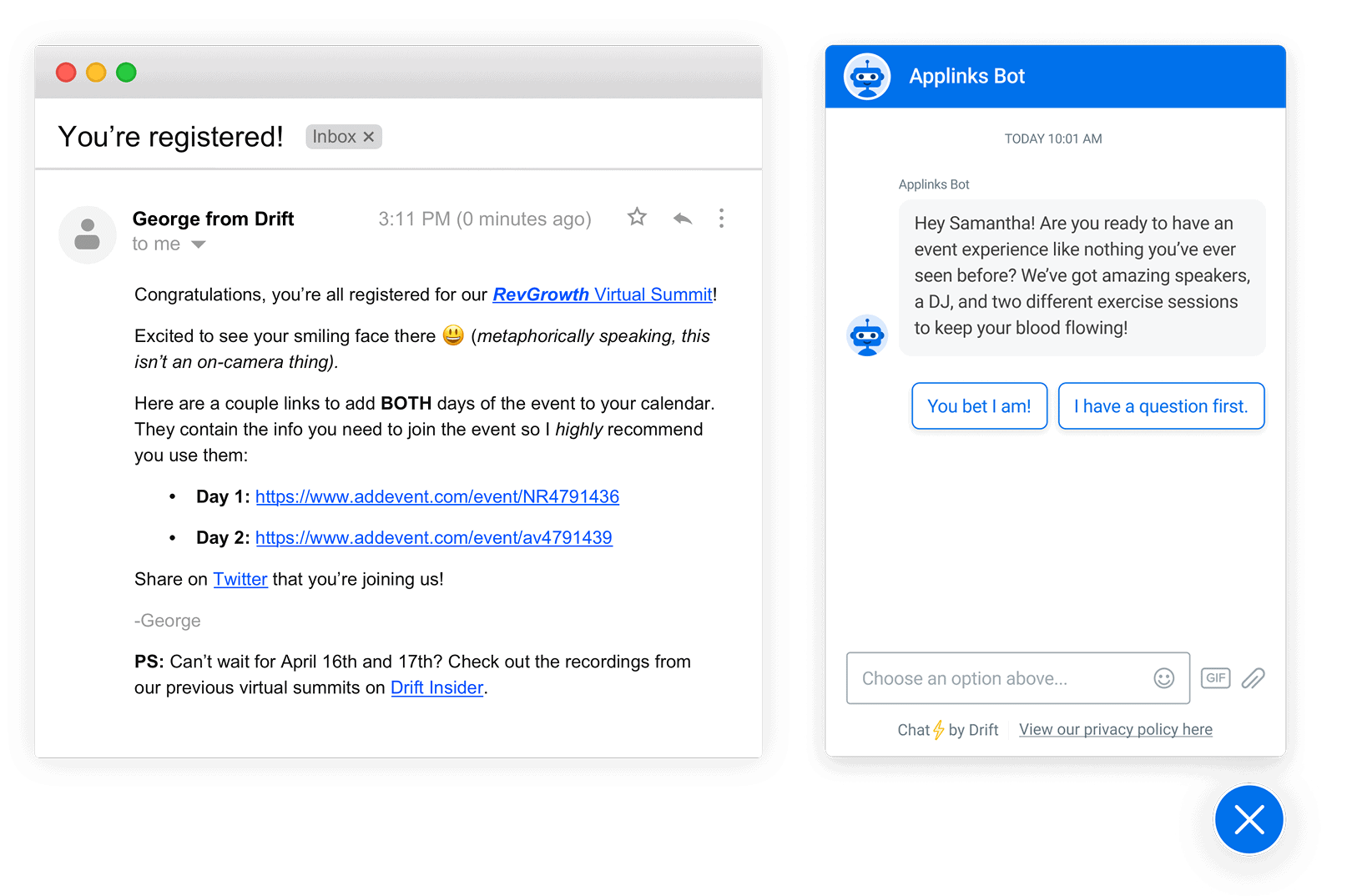

Another way to increase conversions? Personalization. Using UTM parameters marketers can personalize chat conversations for visitors and target accounts. Personalizing your virtual event experience is a game-changer. In his RevGrowth session, Uberflip’s CMO and co-founder, Randy Frisch, shared how marketers too often provide little direction to navigate buyers through their journey:
Once you’ve nailed down a registration process, you’ll need to do two things: update your website, social, and chatbot CTAs and roll out your promotion plan.
Getting Event Promotion Right
Virtual events have a smaller registration window than physical conferences. So make the most of the time you have. In this section, you’ll learn how to tackle promotion across your marketing channels and work with partners and sponsors to boost registrations.
Pre-Event Email Marketing Strategies
A great email marketing strategy for events is built on three things:
Personalization & Segmentation
One of the best ways to personalize emails is by segmenting recipients based on past activities. Start by segmenting your list based on personas (i.e., who the best audience is for this particular event) and topical interest.
For RevGrowth: Virtual Experiences, we segmented for decision-maker level marketers, then by people who attended past events and people who downloaded our virtual event-related content. Our demand generation team personalized the copy for these emails based on recipients’ past actions, which led to higher conversion rates. (61% of registrations from RevGrowth: Virtual Experiences were driven by this tactic.)
Captivating Content That Drives Engagement
If you don’t have anything new to say – don’t say it at all. Make sure every event email you send tells the recipient something new: speaker announcements, session information, etc.
We’ve shared Drift writing best practices before, but if you’re looking for more inspiration, here’s an email invite we love from the folks at Gong.
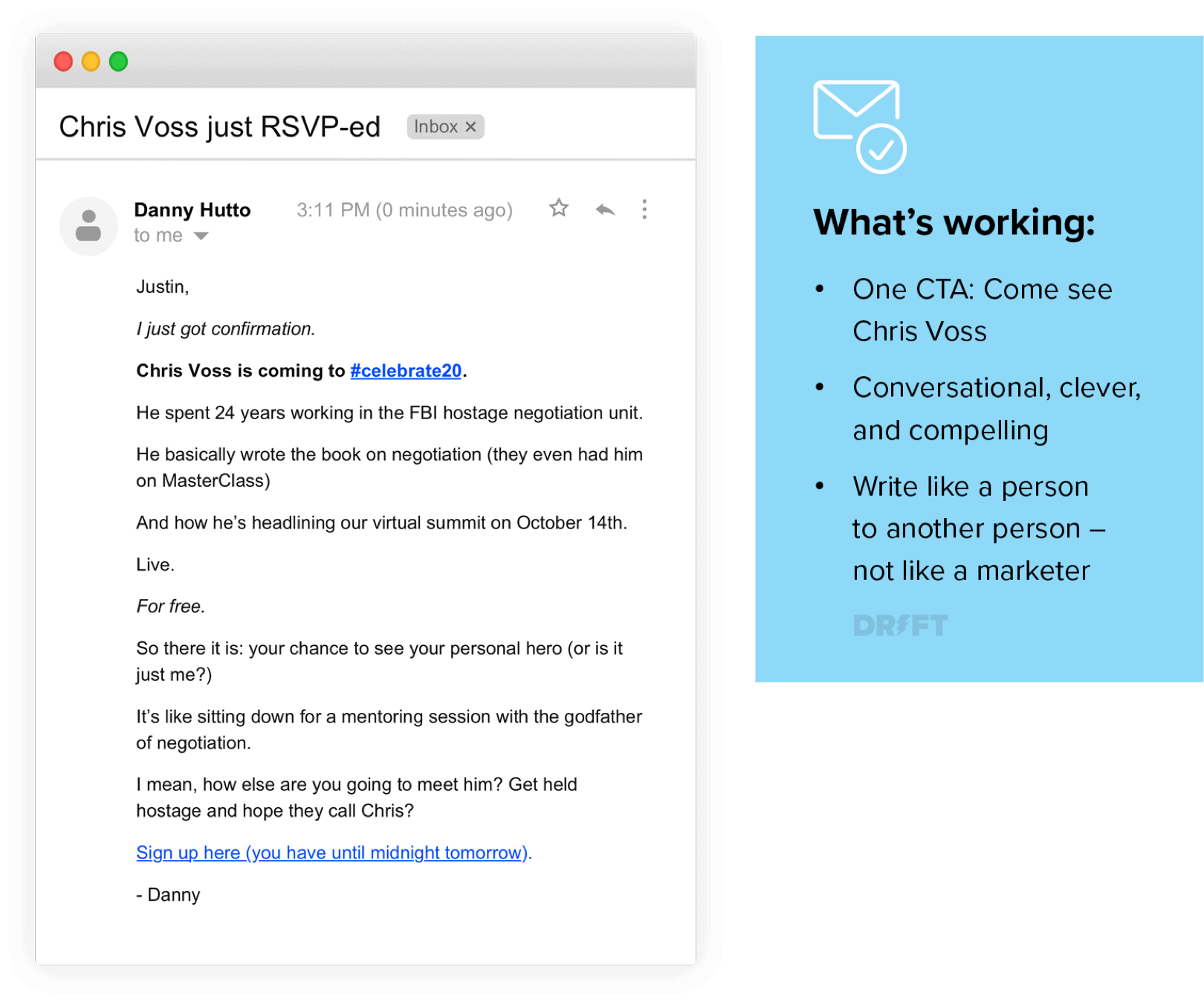
Data-Driven Testing
What types of subject lines drive the most opens? How do plain text emails perform vs. designed templates? How many links should you include per email?
To get answers to these questions, you’ll need to run some tests. For every email you send:
- Do an A/B split test on subject lines
- Experiment with CTA placement
- Segment and test different messaging across relevant audiences
- Identify the speakers that drive the most engagement
Pre-Event Paid Social & Social Media Strategies
Similar to your email marketing strategy for virtual events, your social strategy is all about building hype.
Paid Social: Make Registration Easy & Creatives Compelling
To get the most out of paid social, focus on two key objectives:
- Double down on the two or three channels your target audience is most engaged with
- Make it easy to register
For RevGrowth events, we focused on LinkedIn and Facebook.
Outside of paid LinkedIn ads, Drift sent Sponsored InMail with a personalized message from our VP of Demand Generation, Kate Adams, to target accounts. We also used LinkedIn’s native lead generation to prompt registrations vs. sending recipients to our own event landing page.
Again, you want to make registration as easy as possible to increase conversion – especially when you’re paying. (I.e., This new ad registration process generated an 11x higher conversion rate and 83% lower CPL compared to all the other ad formats we tried across LinkedIn.)
Don’t be afraid to try new things to reach your audience on their terms.
Social Media: Think Outside-the-Box
From a non-paid social standpoint, it’s important to think outside-the-box. Yes, continue posting:
- Speaker updates and coordinate promotion with those speakers
- Past event highlights to entice people to register for your upcoming event
- Partner and sponsorship announcements for cross-promotion to these networks
But, also go the extra mile. Here are some best practices from Drift’s own social media manager, Pat Timmons:
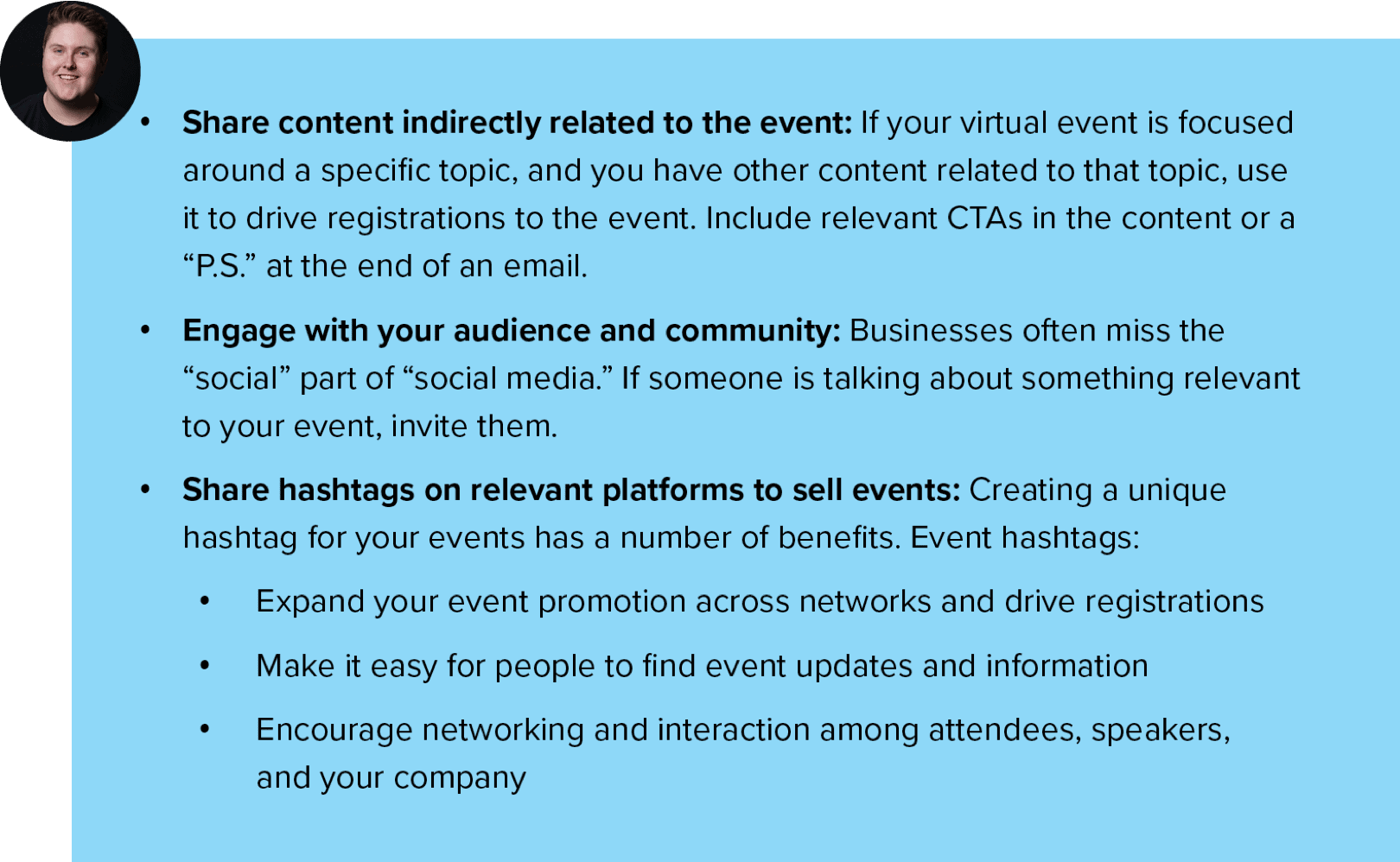

Pre-Event Chat Strategies
We used Drift to create a streamlined registration experience and drive event promotion. Here’s how we did it:
- Use pre-registration bots: Have more than one virtual event planned in your future? Add a pre-registration option at the end of a playbook during an event to capture early interest:
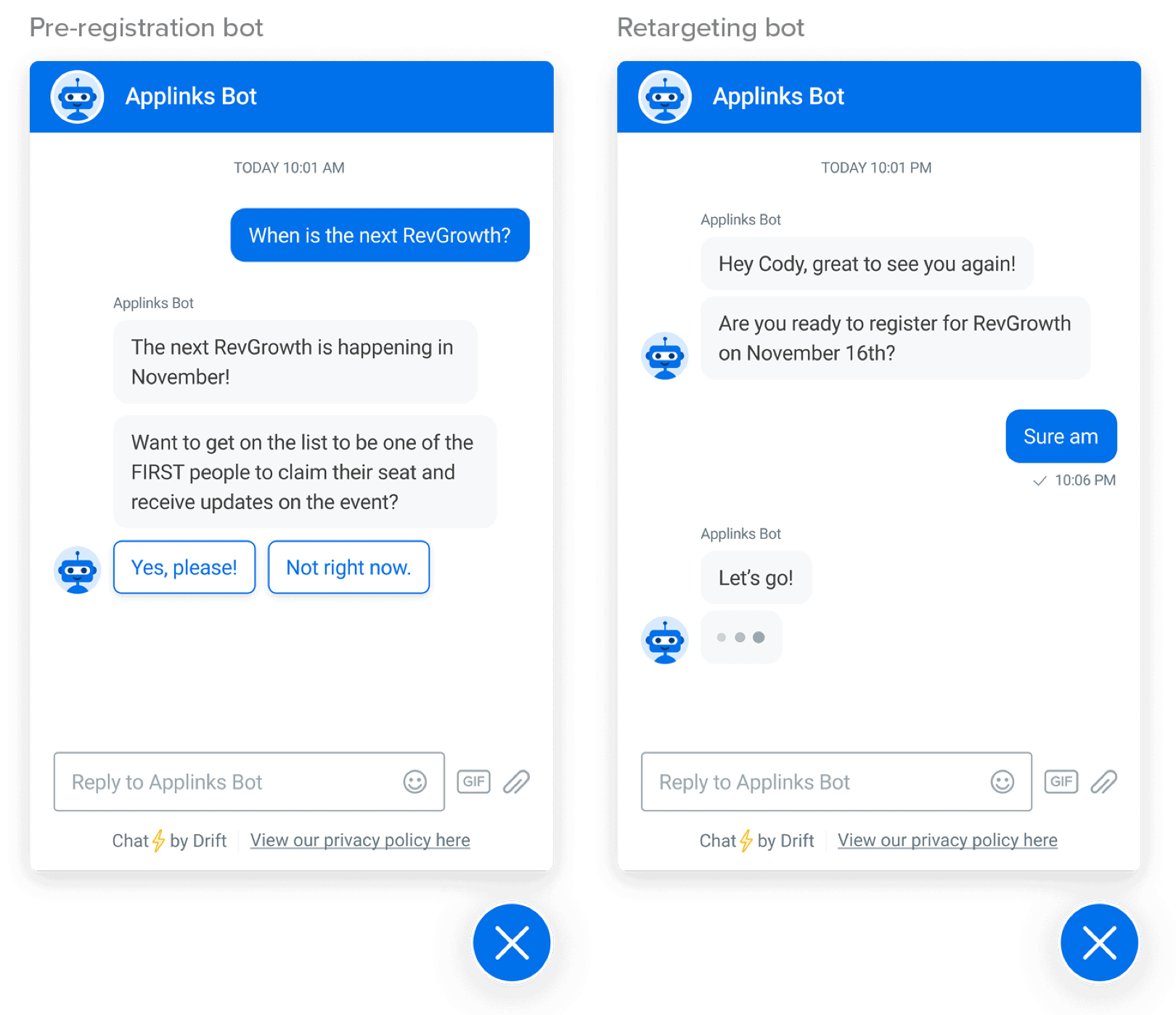
- Target ABM accounts with a personalized bot: Reach out to target accounts to register for an event when they visit your website. Have sales chime in.
- Re-engage with a retargeting bot: The Drift Retargeting bot greets return visitors with new information around the event and points them back to the event page to register.
Encouraging Employees to Promote Your Virtual Event
The more people who promote your event, the larger your potential reach. That’s the idea behind Drift’s “social takeover” strategy. We’ve done this for other pieces of content in the past. But with virtual events, we’ve operationalized the employee promotion process.
Here’s the strategy we use to get more employees to promote our events:
- Embed event updates into company-wide updates/comms: Remind employees about the upcoming event and the goals you’re trying to hit.
- Make sharing easy: Use technology like Bambu to let people share pre-written posts about the event.
- Make it fun: Add a bit of competition to the mix to get more employees involved:
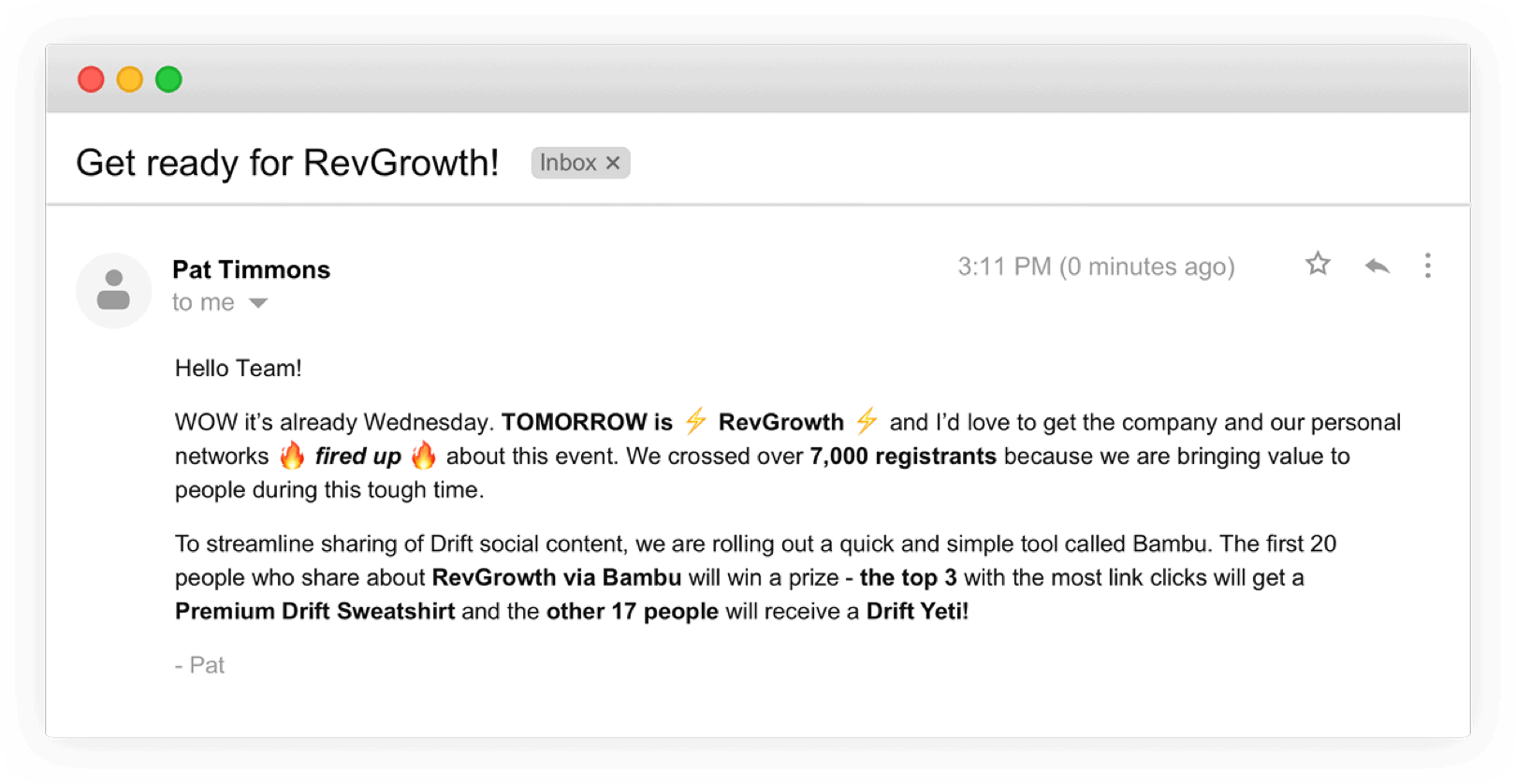
Working with Virtual Event Partners & Sponsors
Great partnerships give your virtual events more authority, enrich event content, expand your potential audience reach, and provide excellent lead-sharing opportunities. Working alongside event managers, you’ll identify which partners are right for your event and how to build the best sponsorship packages.
Choosing the Right Partners
Your virtual event partners should meet three main criteria:
- Lead-share fit: Partners must have a similar audience or ideal customer profile (ICP) as your business / virtual event audience.
- Thought leadership fit: Virtual event partners must provide expertise and value relevant to the virtual event topic.
- GDPR-compliant: All companies should have proper documentation and policies around GDPR.
Event managers will help you to find the right partners and content. However, it’s important that demand generation is deeply involved in finalizing the details around lead-share agreements, contracts, and follow-up planning.
Setting Partnership Standards: Lead-Shares, Promotion, and Follow-Up Planning
Having lead-share agreements built around event promotion is the best way to drive registrations. In fact, past Drift virtual events can attribute almost 50% of registrations to partner referrals.
Your lead-share agreement must include guidelines on how partners can receive the event lead list, expectations for participating in the event, and guidelines on follow-up post-event. How you approach lead-sharing may differ, but there are two common practices:
- One-to-one match: A one-to-one match policy means that for every contact a partner drives to your virtual event, they get a lead.
- Lead-share threshold: Set a registration goal partners must meet to get the entire lead list. For example, if a partner drives 500 leads to attend, they get the entire list.
To track attribution, partners should use unique UTM tracking links. This is essential for lead-share purposes, and so you can understand a partner’s registration performance.
Partnership agreements should also include rules for post-event follow-up. Partners understand that spamming and hounding leads – the second they become available – won’t benefit anyone. So work with them to coordinate follow up in a human way.
Working with Virtual Event Sponsors to Drive Promotions
If you’re looking for additional funds to drive revenue or help with expenses for your virtual events, sponsorship packages are ideal. Not all event sponsorships include agreements around promotions, but we highly recommend drafting them into your event sponsorship packages. If you do, just be sure that the sponsor’s audience aligns with yours.
Here are some suggestions for weaving sponsorship opportunities into your virtual events:
- Sponsored happy hours
- Sponsored speaking opportunities
- Sponsored breaks or breakout sessions
- Sponsored emails
Actioning Sales During Pre-Event Promotion
To get even more value during registration and pre-event promotion, you need to action sales and SDRs.
Events are a great way to engage with and deliver value to target accounts. It’s on demand generation to help sales connect with these contacts and deliver the right message to get them to attend. With Drift, sales are notified when a target account is on the event page. This makes it easy for reps to drop in and engage with buyers to drive registrations and answer any event-related questions.

Your demand generation team should work with sales to craft outreach messaging for each new announcement. Then sales can personalize these messages for each target account. It sounds like a lot of work, but these are your high-value accounts! Sometimes, it pays to do the unscalable things.
